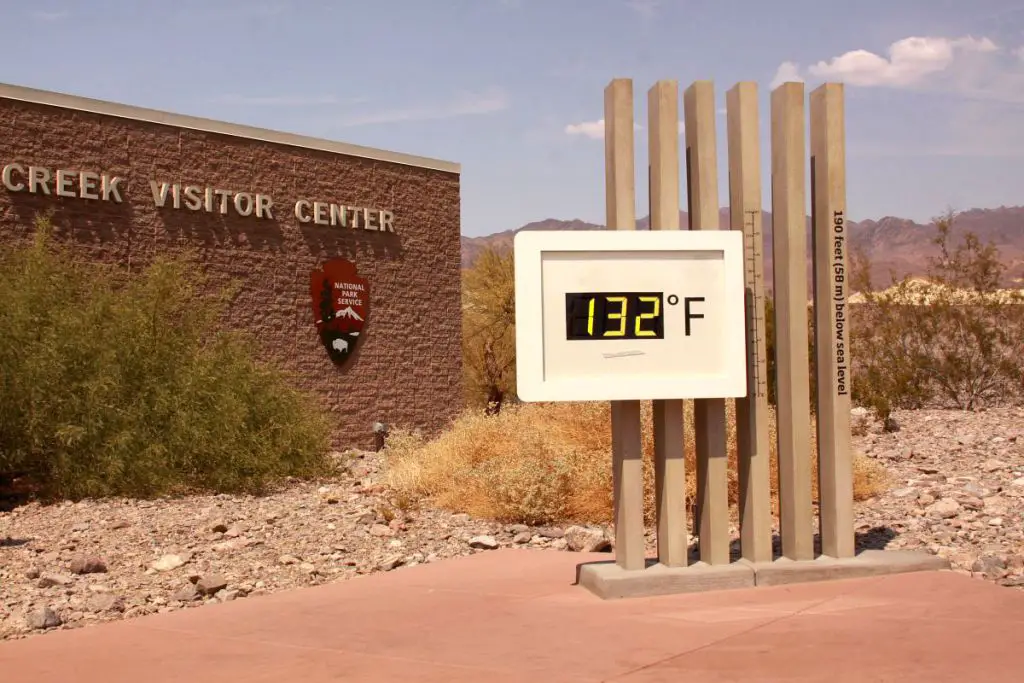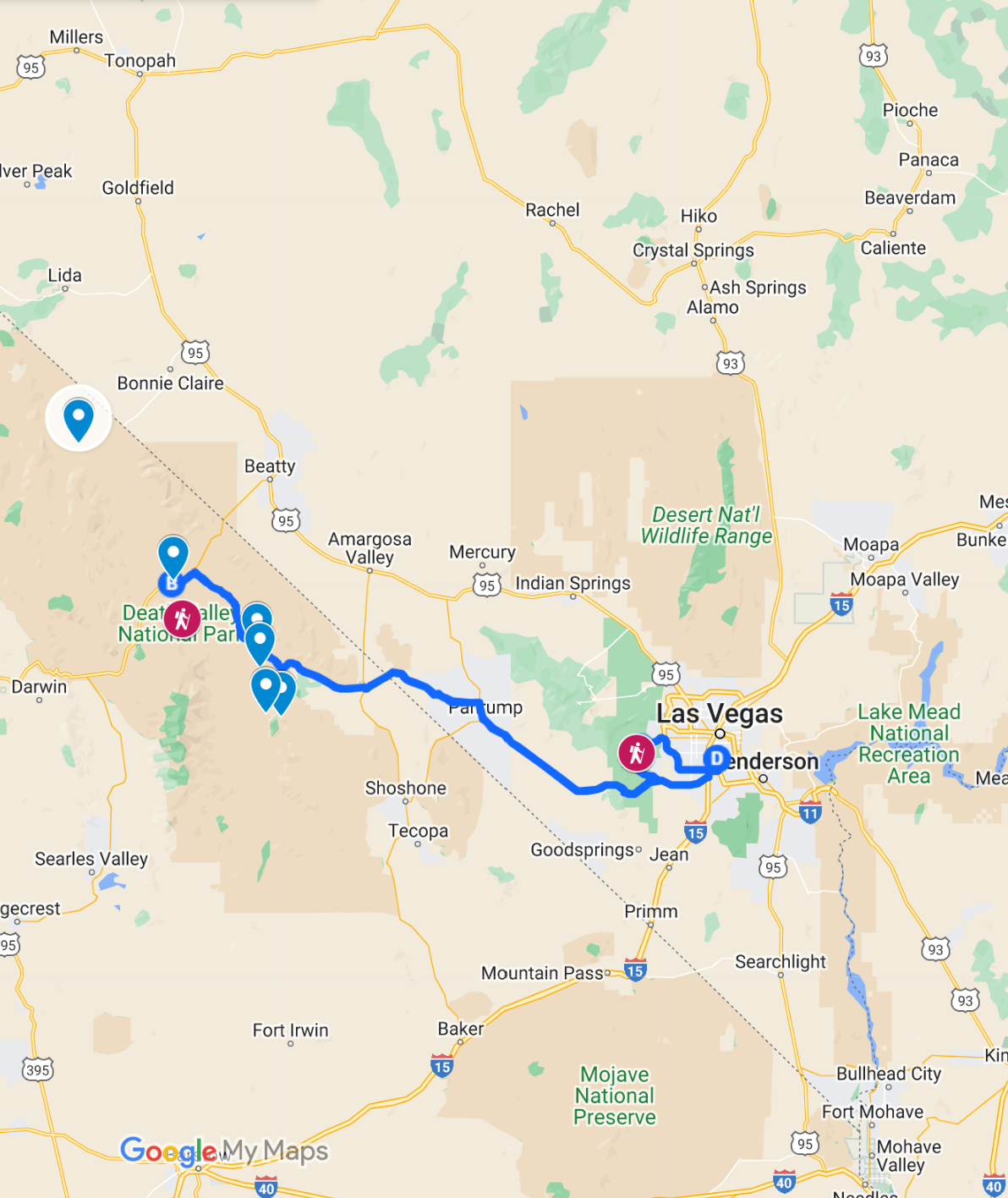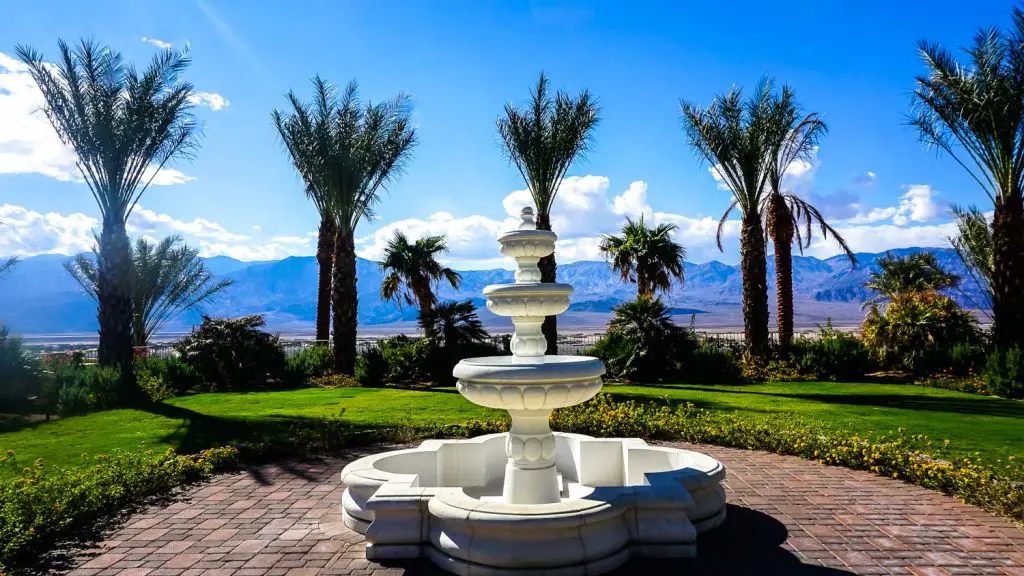

Death Valley is my favorite national park in all of America and is an absolute must when visiting Las Vegas. I think it is one of the most unique and most stunning places on Earth (and I’ve to 90 countries around the world). I’ve spent quite a few days in Death Valley and it’s a place I always like to go back to because it offers just about everything you’re looking for.

If you’re planning to visit Las Vegas and have ambitions beyond blowing all your money at the casino, visiting mediocre clubs, and being swarmed by millions of people, then visiting Death Valley should be #1 on your list. Of course, from Las Vegas you are spoiled for choices because you can visit Zion and Bryce Canyon to the east but for this post, I am focusing on Death Valley.
Table Of Contents showDeath Valley is famous worldwide for setting record breaking temperatures. During the summer months, temperatures will regularly eclipse 120F (49c) and hiking in this temperature is a surefire way to severe dehydration. Joshua Tree is nearby and is slightly cooler but will see temperatures regularly above 100F (40c).
While it is definitely not advisable to visit these parks in the summer months, people still do it. Obviously extreme hydration is a necessity but also you should just call it quits between the hours of 11am and 4pm. Go relax at your hotel in the A/C to prevent anything disastrous from happening.
Read Also On My Blog: The Perfect 5 Day Itinerary For Joshua Tree, Death Valley, and Red Rock Canyon
I visited Death Valley in late October which is a great time of year. Temperatures were a much more manageable 90F (32c) in Death Valley. Night time temperatures are even chilly at times, sometimes reaching temperatures below 15 degrees. Spring time is also a great time to visit these parks as the winter rains usually bring about beautiful flowers that dot the barren landscape of Death Valley.

The trip starts in the Las Vegas and ends in Las Vegas. It’s imperative to rent a car for this trip but thankfully Las Vegas is one of the biggest car rental airports in all of the US. You’ll find cars in Vegas without any problem.
Las Vegas to Death Valley State park is 120 miles and takes just over two hours to reach. Given how large Death Valley is, I would recommend spending at least one night here so you don’t have to rush anything. Two nights would be ideal and almost essential during the months of May to October because it is simply too hot to do anything between the hours of 12pm-4pm.
Death Valley is an incredibly popular day trip from Las Vegas. In fact, if I had to choose one place to go out of all the amazing places within driving distance of Las Vegas, it would certainly be Death Valley.
You can definitely do this trip in a day and I will go into detail about this later in the post.
The entrance fee for Death Valley is $30 per car. This price is good for 7 days meaning you can stay inside the park at one of the many hotels for a week. You can also purchase an annual entrance pass for $55 which allows you to visit as much as you want and as many times as you want in 1 year.
Make sure to have the ticket visible on your car at all times otherwise you will be fined!
Fees are waived at Death Valley National Park on the following days:
The itinerary starts in Las Vegas. From the airport (or city), the drive from Las Vegas to Death Valley is 150 miles and takes 2.5 hours. As soon as you leave the city, you’ll see the landscape change into the dramatic mountain range that dominates all of Death Valley.
There’s not much to see along the way except for Red Rock National Park but I saved that for the end to visit on the way back to Las Vegas. I would recommend leaving Las Vegas as early as possible so you can see Death Valley National Park when the temperatures are cooler and the morning rays are still fresh.

Describing Death Valley is an essay in and of itself. Most people think of Death Valley as just a very hot place (which it is) but it is so much more. To summarize as elegantly as possible, it is the ultimate display of nature’s superlatives.
Extremes on all ends colliding in one small park in California. From dramatic mountain ranges, to volcanic craters, to rolling sand dunes, to salt flats, to stunning badlands, this park as extremes of all ends merging in one park. You can drive a few minutes and be in a completely different landscape, all more stunning than the last.

Personally, it reminded me a lot of previous places I’d been to. Namibia’s landscapes really resonate with me here, especially the drive around the Fish River Canyon. Bolivia’s Salt Flats are an obvious comparison to the much smaller Badwater Basin, and Zabriskie Point is so similar to Rainbow Mountain in Peru. Death Valley truly is a mind blowing place.
Within the National Park, there are essentially two “villages”, Stovepipe Wells, and Furnace Creek that are more or less just hotels with a gas station. There are only 3 hotels in the entire National Park: The Oasis Inn, The Furnace Creek Ranch, and Stovepipe Wells Hotel. The Oasis and Ranch are located next to each other in Furnace Creek and are owned by the same company.





The Oasis Inn is incredibly nice, with high end dining, rooms, and a big pool area. The Ranch is slightly less luxurious but offers everything you need. We stayed at the Ranch as the rooms were much cheaper ($175/night vs $400+ at the Oasis). There are many accommodation options in the towns directly outside the park. Because the park is so big, we wanted to stay inside the park to avoid driving for so long to get in and out every day.

I would recommend booking accommodations at these two hotels in advance. They can book up quickly during the peak season months as there are literally only these three accommodation options and tourists want to stay inside the park.